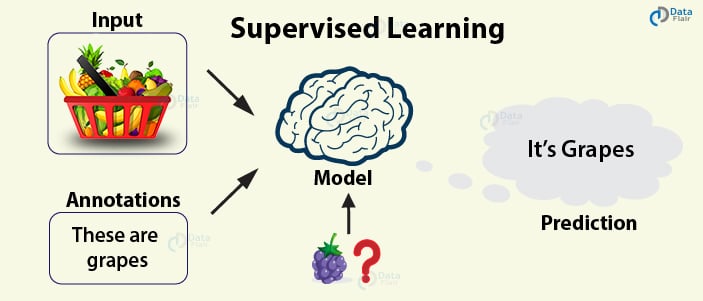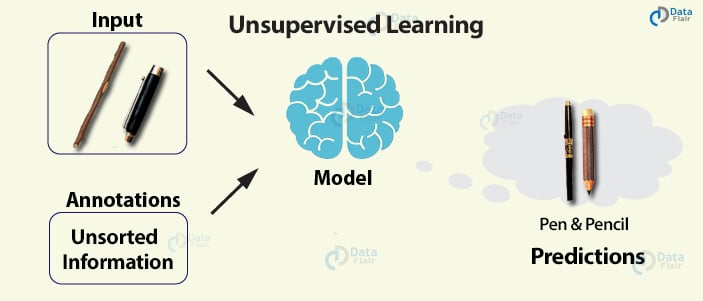Machine Learning Basics – Master the ML Techniques in 3 mins!
Free Machine Learning courses with 130+ real-time projects Start Now!!
Basics of Machine Learning – The Perfect Start to Your Data Science Learning
Machine learning is revolutionizing the way we do business and our day to day activities. The old or traditional software programmers were loaded with a lot of work. They first wrote logic based on the current state of the business and then added relevant data.
But, with time, and with the advent of technology, major changes started happening. Megatrends, insane technologies, and automation have taken over and we can proudly say that it is all for good. With the power of machine learning, businesses have become powerful and are reaching new heights.
Machine Learning Basics – Types of Techniques
Its rightly said that your data is only as good as what you do with it and how you manage it.
Businesses and technology leaders apply machine learning, experiment, anticipate and predict the future. Machine learning is used to build predictive models by extracting patterns from large datasets.
In predictive data, these models are helpful. It is used in analytics applications like price prediction, risk assessment, predicting customer behavior, and document classification.
With continuous data flooding in, the machine learning models ensure that the solution is constantly updated. With appropriate and constantly changing data sources in the context of machine learning, there is an opportunity to predict the future.
So what are the types of machine learning techniques? There are three types of ML Techniques:
1. Supervised Learning
Supervised learning as the name suggests getting supervised by someone. It is a learning in which the machine uses data which is already tagged with the correct answer. After that, the machine is provided with a new set of data.
Supervised learning algorithms are often meant to locate, isolate, and categorize objects out of videos or images, making them useful when applied to varied computer vision techniques and imagery analysis.
With the help of supervised learning, the algorithm analyzes the training data (set of training examples) and produces a correct outcome from labeled data. Here the machine has already learned the things from previous data.
So, now is the time it uses the learning wisely.
For example – if we take a fruit basket, the machine will first classify the fruit with its shape and color and would confirm the fruit name.
If one searches for grapes, then machine learning from its training data (basket containing fruits) will use the prior knowledge.
It will then apply the knowledge to test data and will then provide you with the results.
In supervised learning, we start with a dataset that has training examples, each example has an associated label that identifies it.
2. Unsupervised Learning
Unsupervised learning may be a sort of algorithm that learns patterns from untagged data.
In unsupervised learning, the training of the machine is done using information which is neither classified nor labeled.
The machine learning algorithm acts on information without guidance. It groups unsorted information according to similarities, patterns, and differences without any prior training or supervision.
Since there is no training given to the machine, the machine itself finds the hidden structure in unlabeled data and interprets it.
So, suppose if the machine is provided with the image of a pen and pencil and its information is not available then it can be categorized according to the similarities, patterns, and differences. It is basically differentiated on the basis of pre-defined notions. It is getting used for clustering, dimensionality reduction, feature learning, density estimation, etc.
The machine can estimate what kind of groups it can form to differentiate.
For example – a wooden stick with a cap can be a pen and with no cap a pencil. With no learning and no training, the machine tries to interpret itself.
3. Reinforcement Learning
Reinforcement learning is a very interesting kind of learning. There’s no answer key that can tell what’s right. But, the reinforcement learning agent still decides how to act to perform its task.
Reinforcement learning is a neighborhood of machine learning concerned with how intelligent agents need to take actions in an environment so as to maximize the notion of cumulative reward.
Reinforcement learning is one among three basic machine learning paradigms, alongside supervised learning and unsupervised learning.
Reinforcement learning may be a sort of Machine Learning algorithm which allows software agents and machines to automatically determine the perfect behavior within a selected context, to maximize its performance. This machine learning technique is all about taking actions that are suitable and maximize the reward in a particular situation.
It is when the learner receives rewards and punishments for their actions.
For example – In a given scenario, the reward could be utility and the agent could be told to receive as much utility as possible in order to “win”.
Basically, the agent decides what to do to perform the given task. Now, since the training dataset is missing, it is bound to learn from its experience.
Summary
These are just the basics of machine learning, machine learning has more to it. It is the core of our journey towards artificial general intelligence.
In no time, this will change the industry and have a massive impact on our day-to-day lives. That is why I believe that machine learning is worth understanding. If this is not related to your profession, it is not an issue.
But, you should be aware of this at least at the conceptual level and that’s why we are here to help you with our article.
Remember, it’s never too late!
If you are Happy with DataFlair, do not forget to make us happy with your positive feedback on Google





G8
I am exploring your content .